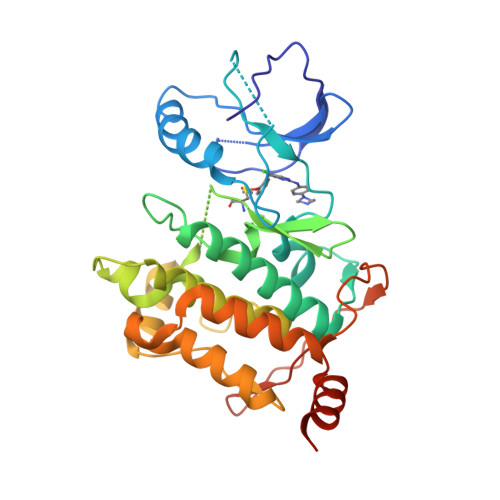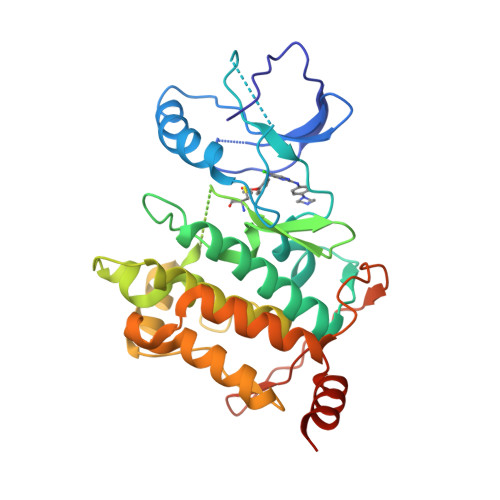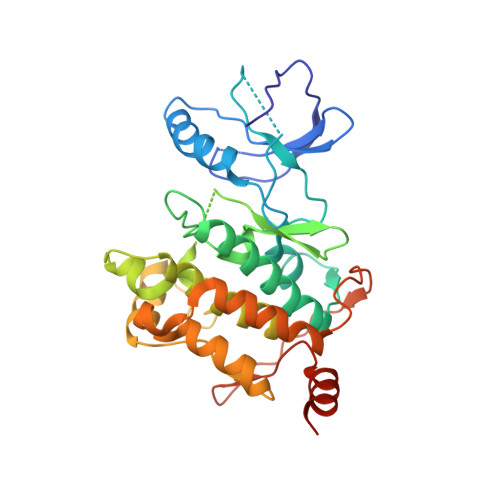Structure-guided development of covalent TAK1 inhibitors.
Tan, L., Gurbani, D., Weisberg, E.L., Hunter, J.C., Li, L., Jones, D.S., Ficarro, S.B., Mowafy, S., Tam, C.P., Rao, S., Du, G., Griffin, J.D., Sorger, P.K., Marto, J.A., Westover, K.D., Gray, N.S.(2017) Bioorg Med Chem 25: 838-846
- PubMed: 28011204
- DOI: https://doi.org/10.1016/j.bmc.2016.11.035
- Primary Citation of Related Structures:
5E7R, 5J7S, 5J8I, 5J9L, 5JH6, 5JK3 - PubMed Abstract:
TAK1 (transforming growth factor-β-activated kinase 1) is an essential intracellular mediator of cytokine and growth factor signaling and a potential therapeutic target for the treatment of immune diseases and cancer. Herein we report development of a series of 2,4-disubstituted pyrimidine covalent TAK1 inhibitors that target Cys174, a residue immediately adjacent to the 'DFG-motif' of the kinase activation loop. Co-crystal structures of TAK1 with candidate compounds enabled iterative rounds of structure-based design and biological testing to arrive at optimized compounds. Lead compounds such as 2 and 10 showed greater than 10-fold biochemical selectivity for TAK1 over the closely related kinases MEK1 and ERK1 which possess an equivalently positioned cysteine residue. These compounds are smaller, more easily synthesized, and exhibit a different spectrum of kinase selectivity relative to previously reported macrocyclic natural product TAK1 inhibitors such as 5Z-7-oxozeanol.
Organizational Affiliation:
Department of Cancer Biology, Dana-Farber Cancer Institute, Boston, MA 02115, USA; Department of Biological Chemistry and Molecular Pharmacology, Harvard Medical School, Boston, MA 02215, USA.

















